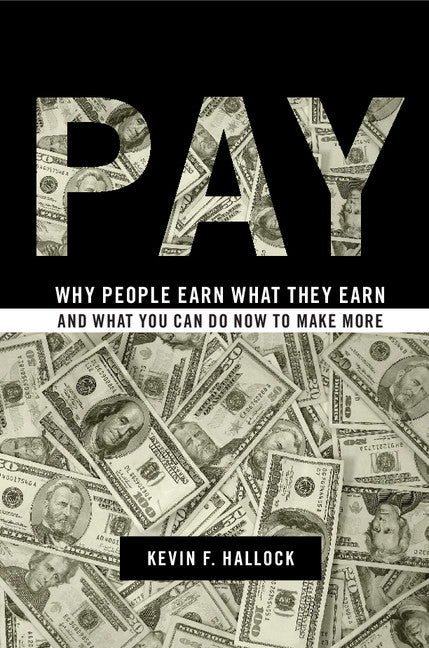Freshly Printed - allow 8 days lead
Couldn't load pickup availability
Pay
Why People Earn What They Earn and What You Can Do Now to Make More
Billions of people are paid for their work. This book explains their current earnings and how they can earn more.
Kevin F. Hallock (Author)
9781107014985, Cambridge University Press
Hardback, published 17 September 2012
238 pages, 26 b/w illus. 21 tables
23.1 x 15.2 x 2.5 cm, 0.46 kg
'A truly refreshing read on the complicated and highly emotional world of pay. Dr Hallock helps make sense of the purpose and approach behind the many components of our pay: what and why we make what we do.' Anne Ruddy, President and CEO, WorldatWork
Billions of people throughout the world are paid for their work. This book was written to explain why they earn what they earn and, in doing so, to help readers understand how they can earn more in both the short and long run. It describes wages, wage differences across groups, wage inequality, how organizations set pay and why, executive and 'superstar' pay, the difference between pay and 'total rewards' (including benefits, opportunities for growth, colleagues and working conditions), compensation in nonprofits, and the differences between the cost of compensation to organizations and the value employees place on that compensation. It also offers tips on what an individual can do to earn more.
Part I. How Hard Can This Be?: 1. Common sense, economics, and 'HR'?: how to pay
2. Wages, the wage distribution, and wage inequality
3. The facts: who makes what and what are their characteristics?
4. The difference between wages and total compensation: is there a difference between employee value of compensation and the cost to companies?
Part II. How Organizations Set Pay Structure and Why: 5. Business strategy and compensation strategy: where you work matters
6. What's in a job?: Job analysis, job evaluation, and internal comparisons
7. Matching the internal organizational structure to the right market data: how and how much to pay
8. Paying executives, athletes, entertainers and other 'superstars'
Part III. How People Are Paid Can Mean As Much As How Much They Are Paid: 9. Evaluating performance, incentives, and incentive pay
10. Stock and stock options
11. Pay mix: why offer benefits? Would employees prefer cash?
12. International compensation
13. Compensation in nonprofit organizations
Part IV. What You Can Do To Make More and Conclusions: 14. What you can do now to make more now and later
15. Concluding thoughts.
Subject Areas: Personnel & human resources management [KJMV2], Behavioural economics [KCK], Labour economics [KCF], Sociology: work & labour [JHBL]


